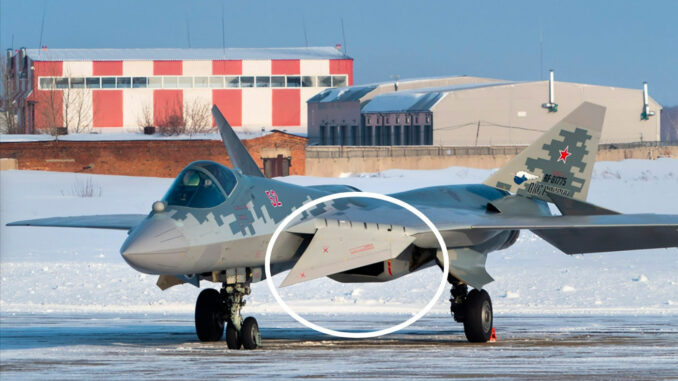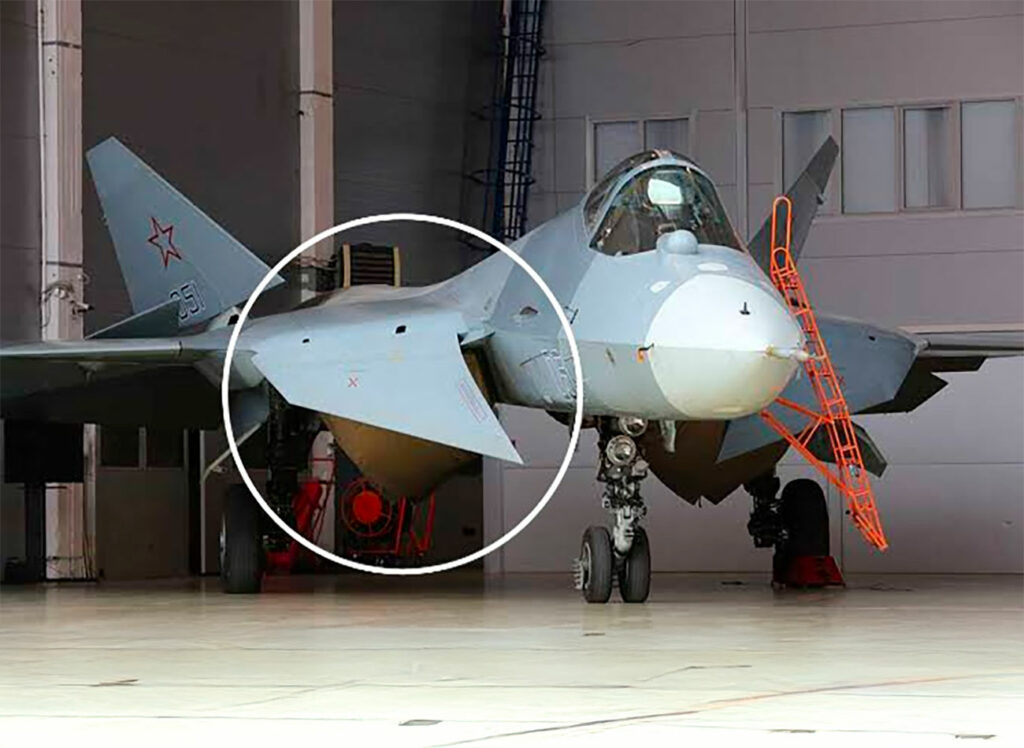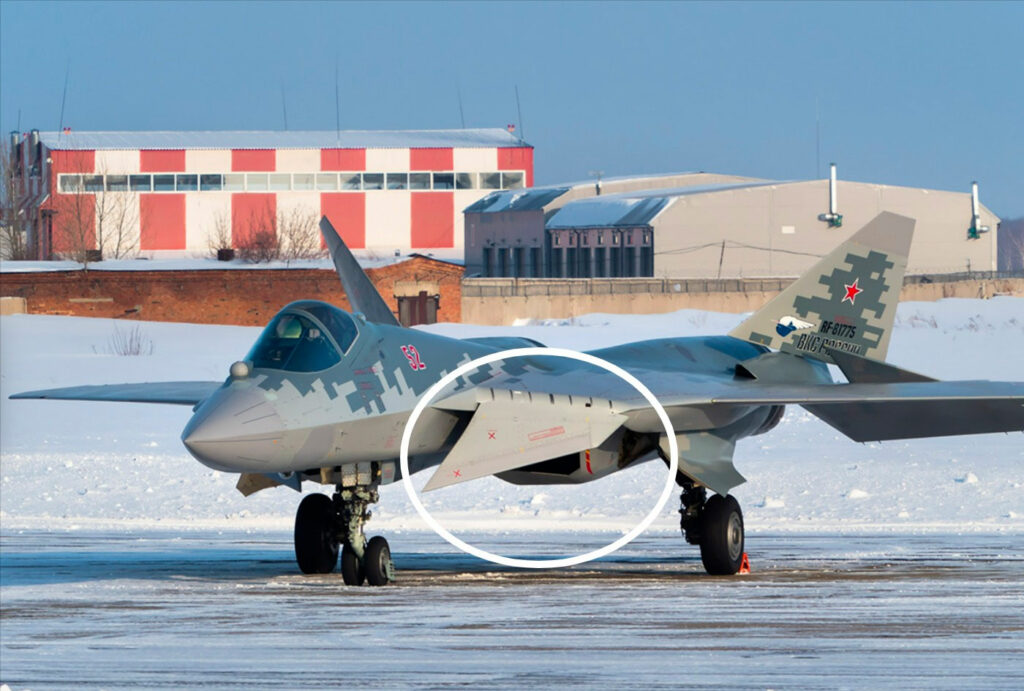
LEVCONs improve fighter aircraft maneuverability by controlling air vortices on the leading edges of the wings.
Leading-Edge Vortex Controllers (LEVCON) are aerodynamic devices installed on the leading edges of fighter aircraft wings. Their main function is to improve maneuverability by controlling air vortices, thereby increasing lift and delaying stall at high angles of attack. Used notably on the Sukhoi Su-57, LEVCONs enable complex maneuvers and contribute to aircraft stealth. Their integration into future European combat aircraft, such as the Système de Combat Aérien du Futur (SCAF), is being studied to optimize aerodynamic performance and maneuverability.

LEVCON: principles and operation
Leading-Edge Vortex Controllers (LEVCON) are moving surfaces located on the leading edges of fighter aircraft wings. Their role is to control airflow around the wing, generating vortices that increase lift and delay stall, particularly at high angles of attack. This ability is crucial for complex aerial maneuvers, enabling pilots to maintain control of the aircraft in demanding situations.
LEVCONs work by creating controlled vortices along the leading edges of the wings. By adjusting the angle and position of these moving surfaces, it is possible to modulate the airflow, generating additional lift and improving aircraft stability during high-incidence maneuvers. This technology also reduces aerodynamic drag, optimizing the aircraft’s fuel efficiency.
LEVCON application on the Sukhoi Su-57
The Sukhoi Su-57, Russia’s fifth-generation fighter, incorporates LEVCONs to improve maneuverability and stealth. These devices enable the Su-57 to execute complex maneuvers, such as “Pugachev’s Cobra”, where the aircraft reaches a very high angle of attack before resuming a normal trajectory. This capability offers a significant tactical advantage in close air combat.
The Su-57’s LEVCONs also help reduce the aircraft’s radar signature. By controlling airflow, they minimize radar reflections, thus enhancing the aircraft’s stealth. This combination of increased maneuverability and enhanced stealth makes LEVCONs a key element in the design of modern fighter aircraft.
LEVCON integration in future European combat aircraft
In Europe, programs such as the Système de Combat Aérien du Futur (SCAF) are considering the integration of LEVCON into the design of their next-generation aircraft. Institutions such as ONERA in France are carrying out in-depth research into the application of LEVCON to improve the maneuverability and stealth of future fighters. Wind tunnel tests have been carried out to assess the impact of LEVCON on aerodynamic performance, with promising results.
The integration of LEVCON in future European combat aircraft is intended to meet modern operational requirements, where the ability to perform complex maneuvers and evade enemy detection systems is crucial. This technology could also contribute to aircraft fuel efficiency, by reducing drag and optimizing overall aerodynamics.
Economic and industrial consequences of LEVCON adoption
The adoption of LEVCON in fighter aircraft design has significant economic and industrial implications. The development and integration of these devices requires investment in research and development, as well as modifications to manufacturing processes. However, the operational advantages offered by LEVCONs, such as improved maneuverability and stealth, may justify these additional costs.
On the industrial front, LEVCON integration can boost innovation and competitiveness for aerospace companies. Fighter aircraft manufacturers who have mastered this technology can position themselves favorably on the international market, by offering aircraft with superior performance. In addition, collaboration between research institutions and industry in the development of LEVCON can strengthen the technological and industrial capabilities of the aerospace sector.

Future prospects for LEVCON in military aviation
LEVCONs represent a major technological advance in military aviation. Their ability to improve the maneuverability and stealth of fighter aircraft makes them a valuable asset for modern air forces. As threats evolve and operational requirements become more complex, the integration of LEVCONs into future fighter aircraft could become the norm.
Ongoing research into LEVCONs is focusing on optimizing their design and integration, to maximize their benefits while minimizing the impact on aircraft structure and weight. In addition, the application of LEVCONs could be extended to other types of military aircraft, such as combat drones, offering enhanced operational flexibility.
War Wings Daily is an independant magazine.